If ever there was a movie “as gay as a picnic basket” (as Sophia referred to Blanche’s brother on Golden Girls) it’s the bonkers 1943 Technicolor musical The Gang’s All Here.

This might have been just another wartime musical confection if it wasn’t for Busby Berkeley, the visionary choreographer that transformed all those Warner Brothers depression-era musicals like Gold Diggers of 1933, Footlight Parade, Dames and 42nd Street, Here, aside for dance numbers in the Eddie Cantor movie Whoopee!, was his only complete film in color, and he was able to apply the Technicolor palate to his psychedelic visions and the result was mind-blowing and even more insane than usual. Twentieth Century Fox initially balked at the cost, but the film was a major hit and one of the highest grossing films of the year and was nominated for Academy Awards for art direction and color. It was also selected for preservation by the National Film Registry.
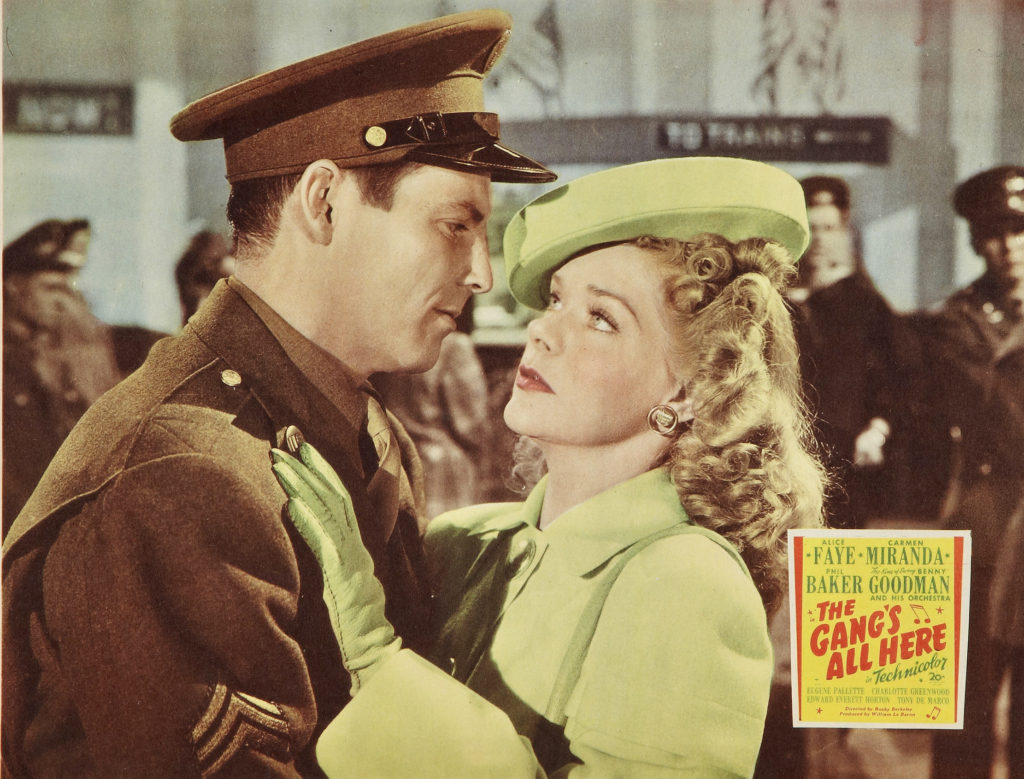
The plot is perfunctory. A wealthy young man is heading off to war. He stops at a nightclub and falls for songbird Alice Faye. While he is away heroically serving in the Army, the nightclub is invited to his family and friends’ mansions to put on an extravagant show to raise war bonds. She mistakenly thinks he is engaged to another, but, trust me, everything works out in the end. Except there’s also Carmen Miranda, Edward Everett Horton and Charlotte Greenwood in the cast to scramble your brain.
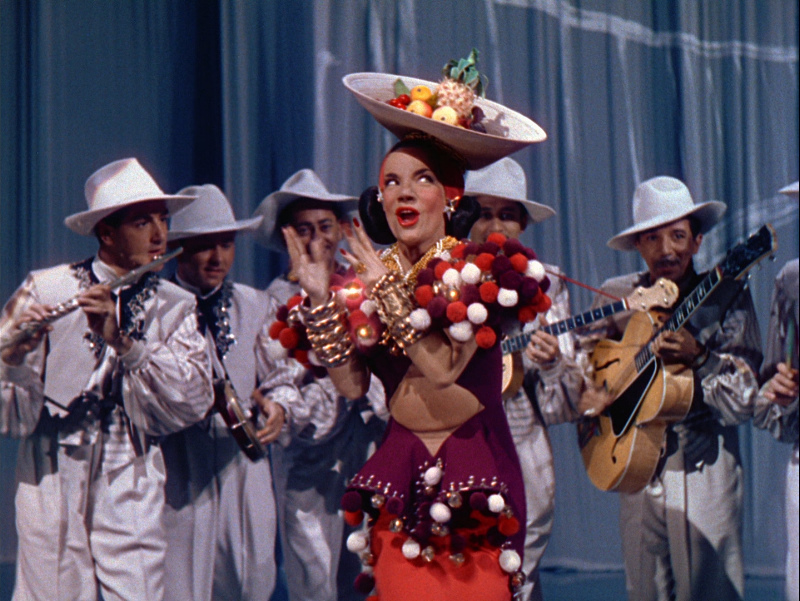
The whole opening scene, supposedly set on a nightclub stage, is a ship pulling into dock unloading products from Brazil. A mesh container of fruit descends and becomes the headdress of Carmen Miranda who breaks into the song “Brazil.” What more can be said about the glorious Carmen Miranda? She really must seem baffling and outrageous to audiences today. But she was then too. The Brazilian samba-singer was a successful Broadway actress and movie star like no other. Dancing on giant platform shoes with thousands of bracelets coating each arm and outlandish headdresses and that ear-to-ear grin she was a wild force of nature singing and dancing on screen. With that thick accent you really couldn’t understand anything she ever said, but who the hell cares?
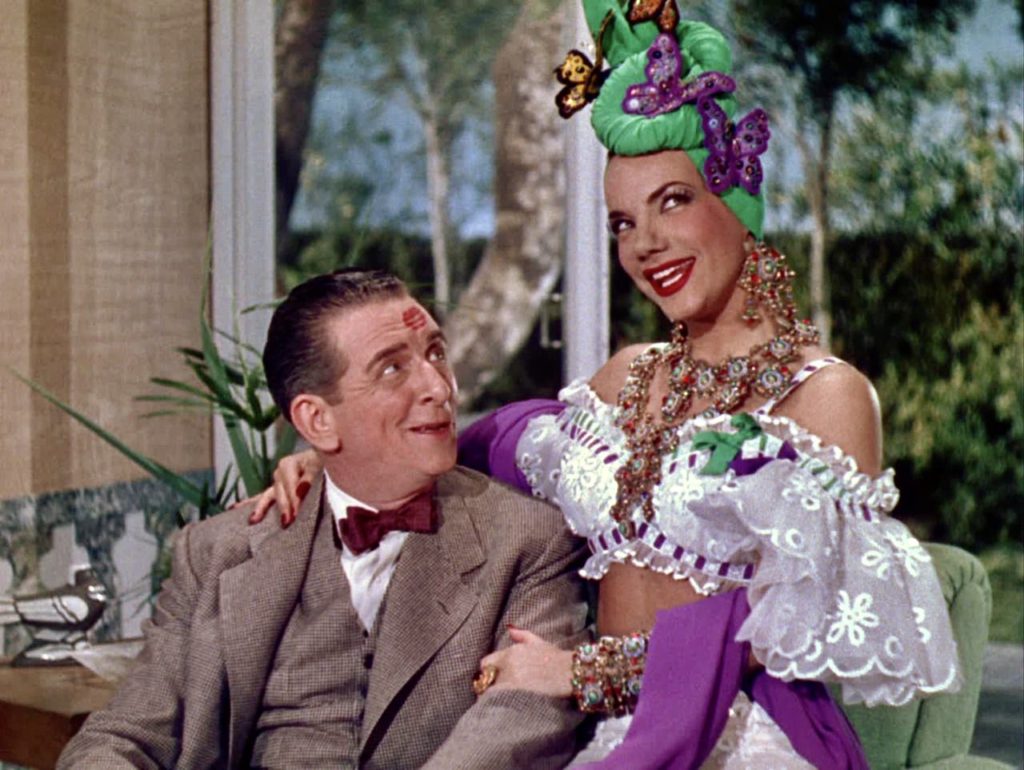
Edward Everett Horton (the screen’s favorite nelly Uncle) plays the husband of Charlotte Greenwood who Carmen has set her sights on romantically- which sexually makes as much sense as anything else in this cockamamie film. When she kisses him all over his face leaving slashes of red lipstick there’s something slightly obscene about it.
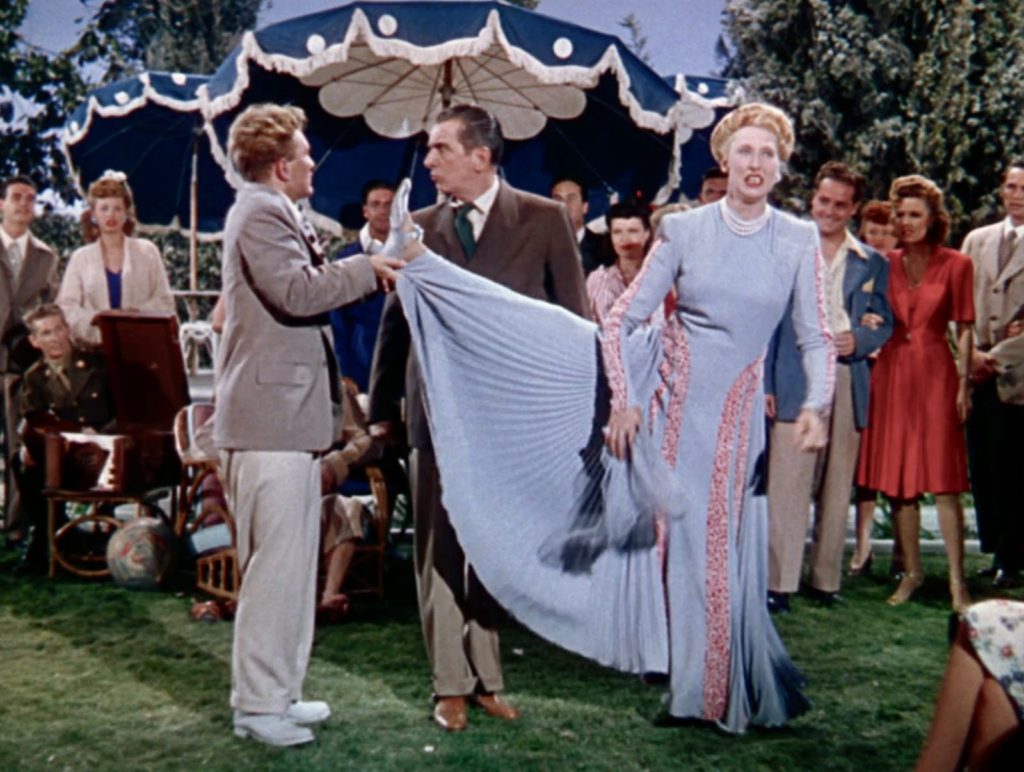
Charlotte Greenwood was another wild card in the film. A tall, leggy comedienne, she had always been known for her double-jointed ability to throw one leg up almost to her head. She always had a horsey, manish quality on screen, and married to Edward Everett Horton one immediately thinks of the term “beard.”
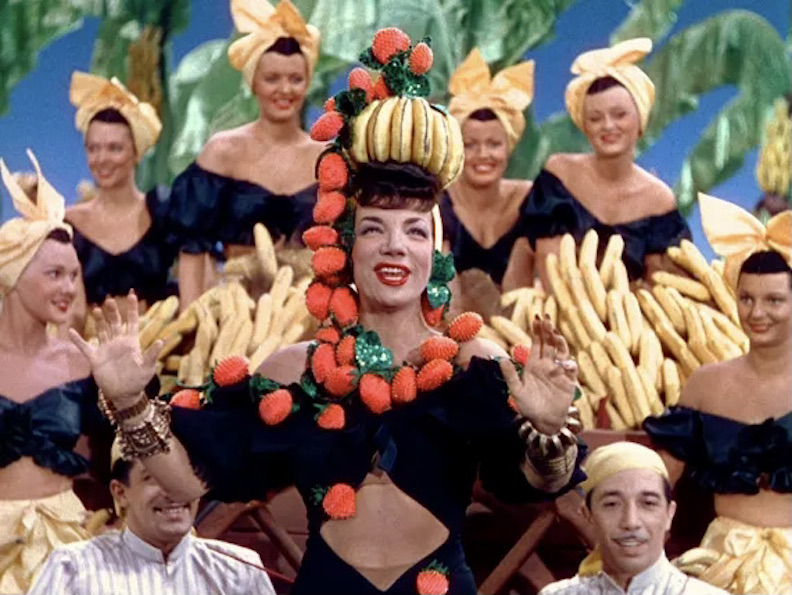
But the musical numbers are so wonderfully cracked. Carmen Miranda’s “The Lady in the Tutti-Frutti Hat” is probably the Webster’s Dictionary definition of “camp.” It begins with a chain of organ grinders and their monkeys in the nightclub, then cuts to dancers running up a sand dune (with palm trees with large green silk leaves) and then morphs into all the gals holding up giant bananas creating a vertiginous wave with the oversized fruit. The production code at the time demanded the women not hold the bananas from their hips. Lying down on the sand are woman with their legs spread holding giant strawberries on the ground that the giant bananas dip into. It’s so phallic and loony you think you’ve lost your mind. And then Carmen Miranda arrives, using bananas to jingle out a tune only to eventually pull away to reveal a banana headdress that reaches to the stars.
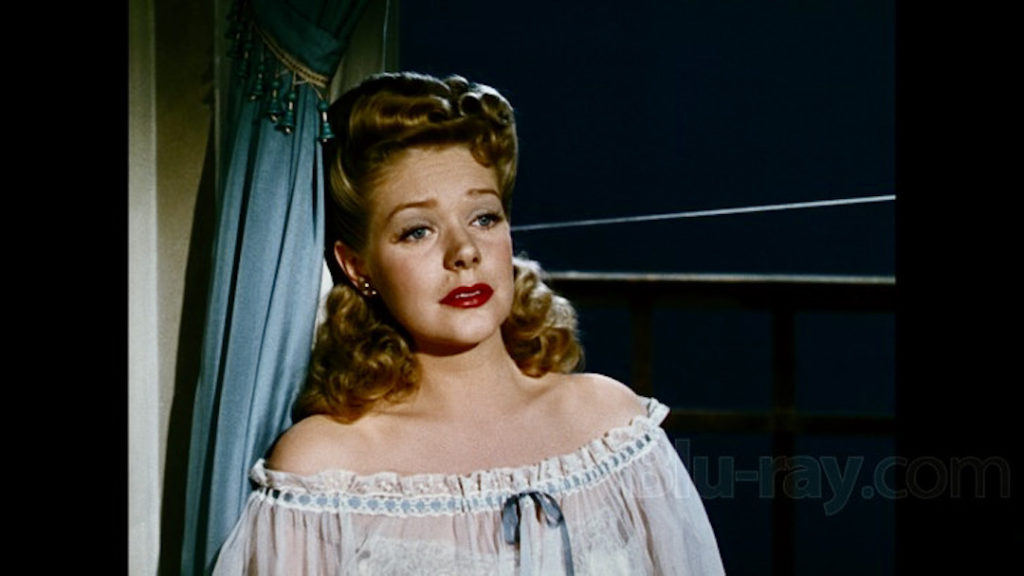
Alice Faye was, along with Betty Grable, the reigning musical queen of Twentieth Century Fox. She looks glorious in The Gang’s All Here, but is slightly reserved and remote. That might have to do with the fact that she was pregnant with her second child during the making of the film. She was also almost out the door of the studio she jokingly referred to as “Twentieth Penitentiary Fox.” But she gets to wear a hat that looks like a giant Alka-Seltzer, and has one of my favorite musical moments singing “No Love No Nothin’.” She plays a war bride moping at home for her man. She caresses his pipe, his slippers. At the sound of someone on the stairs she runs to the front door but, alas, her man is not there. The lyrics are: “I promised I’d wait for him till even Hades froze. I’m lonesome, heaven knows, but what I said still goes, no love, no nothin’ and that’s a promise I’ll keep. No fun with no one, I’m getting plenty of sleep.” I love a musical number about someone who just wants to get fucked.
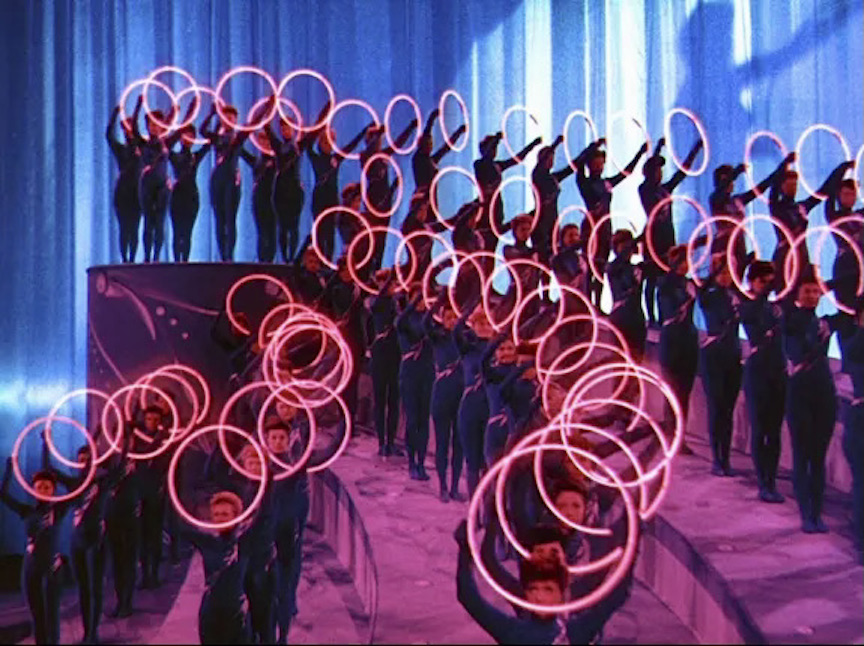
The finale, a tribute to the “polka dot” is so beautiful and crazy and involves children, giant neon hoops of different colors, and eventually becomes a kaleidoscope of colors and legs and faces. I cannot describe the Technicolor madness involved but it beats out the end of 2001. In fact, the film made a kind of resurgence when I managed a movie theater in the 70s. And it was because of the “head-y” nature of the film that members of the audience stumbled up the stairs of the theater high as yaks. Unfortunately, all that color weirdness on screen was too much for some members and I had to hand out valiums at the snack bar to bring down some freaked-out theatergoers. I felt like a tent nurse at a gay Woodstock.
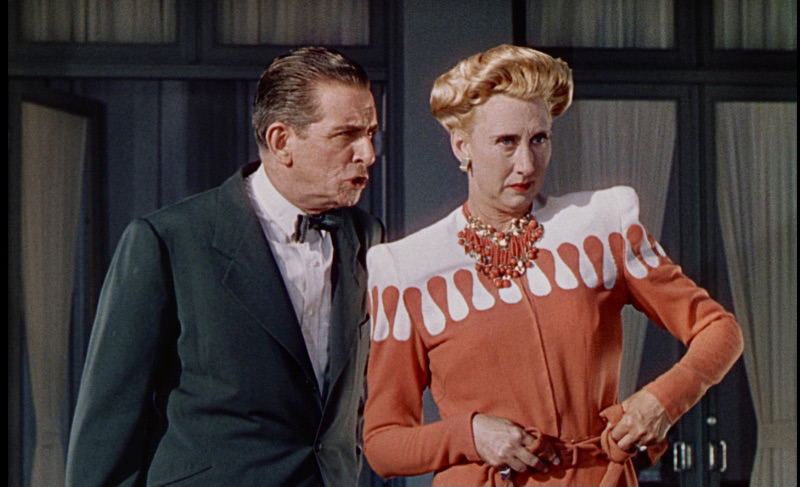
The film has had a spotty release on home video. Part of an Alice Faye DVD box set first, and then a Carmen Miranda DVD box set later, it was the same washed-out print. The film came out on Blu-ray by way of the boutique label Twilight Time and it was better, but still not great. Fortunately, the UK company Eureka! Put out a Blu-ray edition where the colors really pop and that’s my go-to version to throw on and startle guests with.

I love showing young children the musical numbers in the film. It delights them in just the right way. They react to it primitively- the craziness, the wild color scheme, the visual tricks and whacky Carmen Miranda with fruit on her head. It’s cartoonish and mad.
It doesn’t get gayer than that.


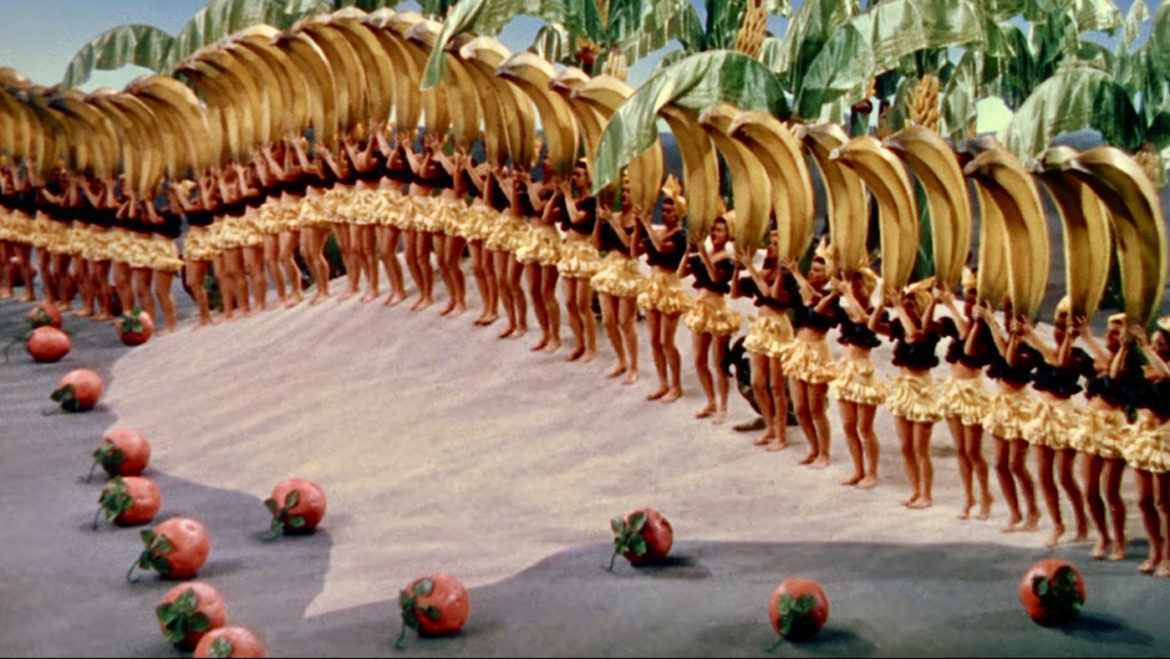
Good show Dennis ! I ran it at the Orpheum, always one of my favorite Busbeys!
Hi there, I do think your web site may be having web browser compatibility issues. When I take a look at your website in Safari, it looks fine but when opening in I.E., it has some overlapping issues. I merely wanted to provide you with a quick heads up! Aside from that, wonderful site!